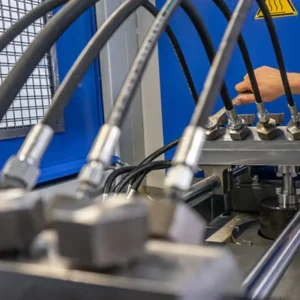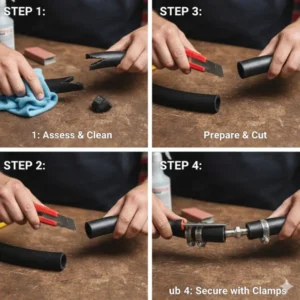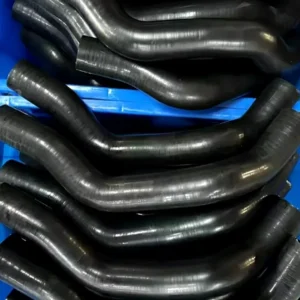When working with hydraulic hose, you’ll inevitably encounter various sizing conventions, and one of the most common is DN. But what is DN in hydraulic hose? This seemingly simple designation is actually a crucial piece of information that helps us ensure proper fit, flow, and system integrity.
In this comprehensive guide, we’ll delve into the meaning of DN, its importance, and how it relates to other common sizing methods, all to help you make informed decisions when selecting hydraulic components.
What is DN in Hydraulic Hose
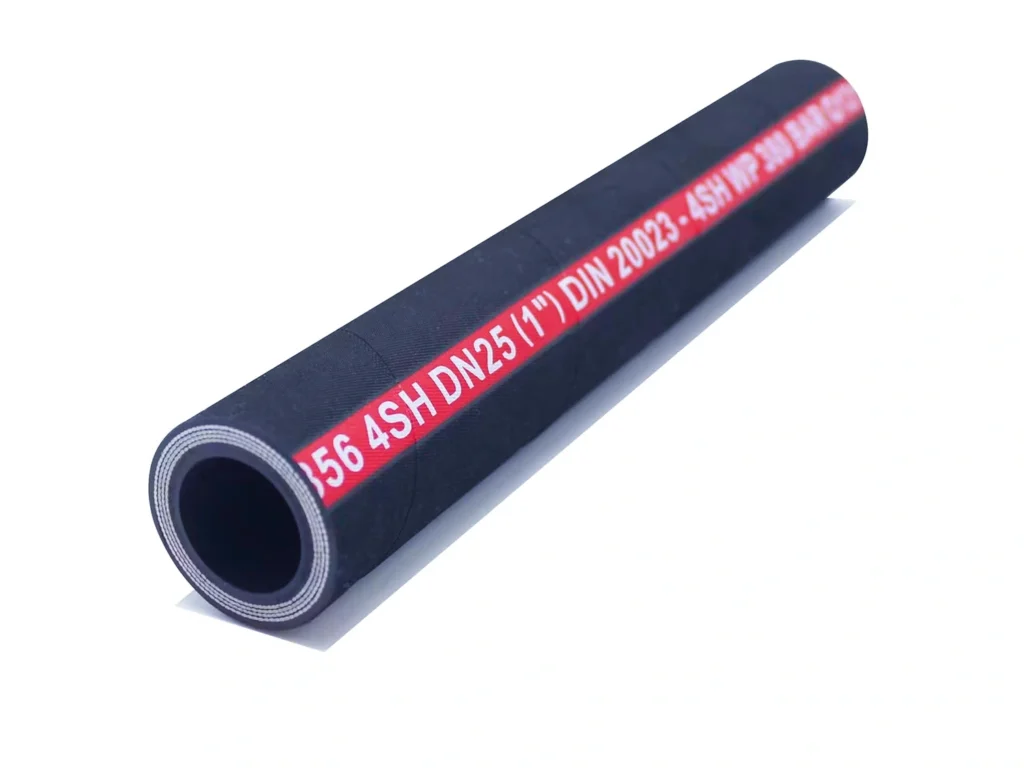
DN stands for “Diameter Nominal” or “Diamètre Nominal” (French for “Nominal Diameter”). It’s a metric sizing standard used to classify the approximate inner diameter (ID) of a hose, pipe, or fitting. Unlike precise measurements, DN is a standardized designation that simplifies compatibility across various manufacturers and regions, primarily in Europe and Asia.
The DN value does not represent an exact measured diameter but rather a rounded number for easy categorization. For instance, a DN 25 hydraulic hose will have an inner diameter of approximately 25 millimeters, though the actual measurement might be slightly different. We use DN to ensure that components designed for a specific flow capacity and physical size can be readily interchanged within a system.
The Importance Of Hydraulic Hoses
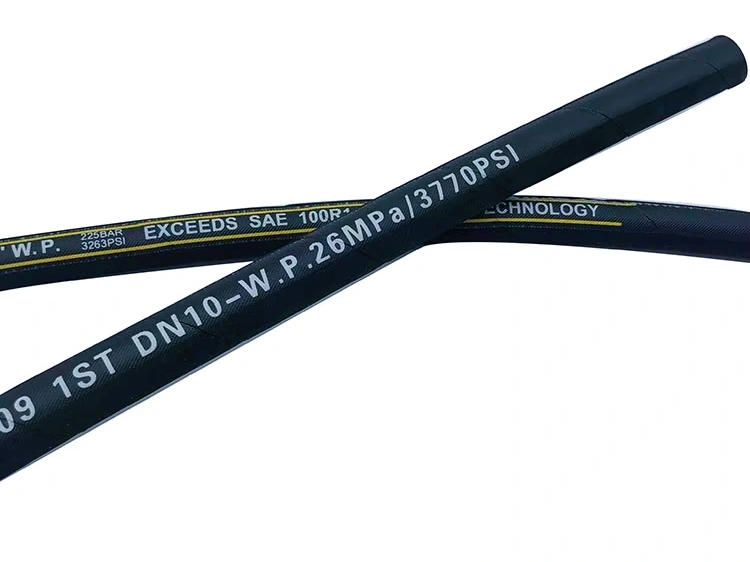
Selecting the correct inner diameter for a hydraulic hose is paramount for several reasons, and DN provides a consistent way to ensure this. An incorrectly sized hose can lead to a cascade of problems, from system inefficiency to catastrophic failure.
- Fluid Velocity Control: The inner diameter directly influences the velocity of the hydraulic fluid. If the DN is too small, the fluid velocity will be excessively high, leading to increased friction, heat generation, pressure drops, and energy loss. Conversely, if the DN is too large, the fluid velocity will be too low, potentially causing sluggish system response and inefficient power transmission.
- Pressure Drop Minimization: Every foot of hose contributes to pressure drop within a hydraulic system. A hose with an inappropriate DN can significantly increase this pressure drop, requiring more power from the pump and reducing the overall efficiency of the system.
- Heat Generation: High fluid velocity through an undersized hose creates turbulence and friction, which translates directly into heat. Excessive heat can degrade hydraulic fluid, damage seals, and shorten the lifespan of components, including the hydraulic hose itself.
- Component Lifespan: When a hose is forced to operate under conditions of excessive fluid velocity or pressure due to incorrect sizing, it experiences higher stress. This can lead to premature wear of the inner tube, reinforcement layers, and fittings, drastically reducing the hose’s operational life.
- System Performance: Ultimately, the correct DN ensures the hydraulic system performs as intended. It allows the right amount of fluid to flow at the optimal velocity, delivering the required power and responsiveness.
How DN Relates to Other Sizing Systems
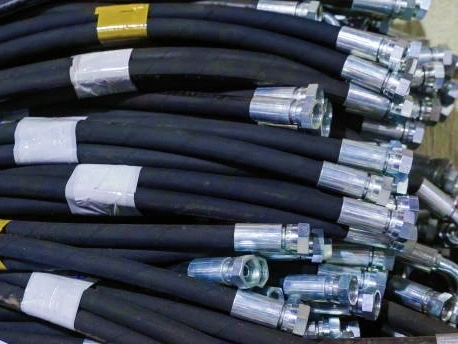
While DN in hydraulic hose is prevalent, especially internationally, we also encounter other sizing conventions. Understanding how DN translates to these systems is essential for global compatibility and selecting the right replacement parts. The most common alternative is the “dash size” system, primarily used in North America.
DN vs. Dash Size
The dash size system uses a number representing the inner diameter in sixteenths of an inch. For example, a -8 hydraulic hose indicates an inner diameter of 8/16ths of an inch, or 1/2 inch. This can sometimes be confusing when trying to cross-reference with DN.
Let’s look at a comparison table that we frequently refer to for common hydraulic hose sizes, illustrating the relationship between DN, dash size, and actual imperial and metric inner diameters:
| DN (Nominal Diameter in mm) | Dash Size (1/16ths of an inch) | Actual ID (Inches) (Approx.) | Actual ID (mm) (Approx.) |
| DN 6 | -4 | 1/4 | 6.4 |
| DN 8 | -5 | 5/16 | 7.9 |
| DN 10 | -6 | 3/8 | 9.5 |
| DN 12 | -8 | 1/2 | 12.7 |
| DN 16 | -10 | 5/8 | 15.9 |
| DN 19 | -12 | 3/4 | 19.1 |
| DN 25 | -16 | 1 | 25.4 |
| DN 32 | -20 | 1 1/4 | 31.8 |
| DN 38 | -24 | 1 1/2 | 38.1 |
| DN 51 | -32 | 2 | 50.8 |
When we’re sourcing a replacement hydraulic hose, knowing both the DN and the dash size (if available) gives us a robust cross-reference, minimizing the chance of error.
Factors Beyond DN: A Holistic Approach to Hose Selection
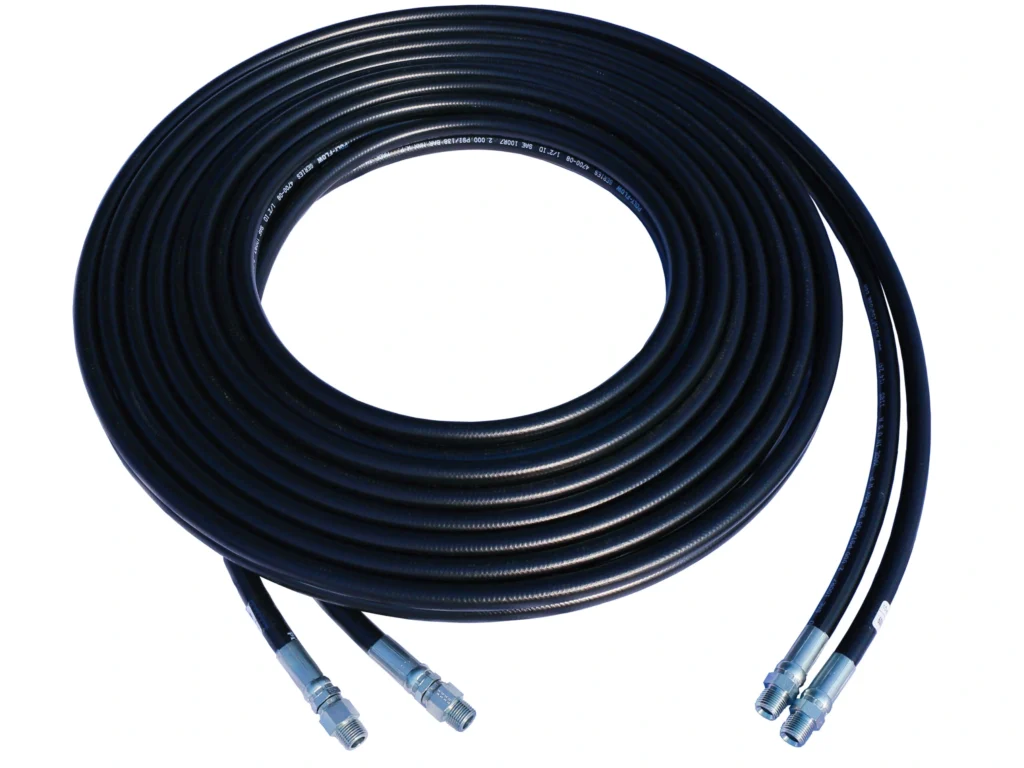
While understanding what DN is in a hydraulic hose is foundational, it’s just one piece of the puzzle. We always consider DN in conjunction with several other critical factors to ensure we select the absolute best hose for any application. These factors are often remembered using the STAMPED acronym: Size, Temperature, Application, Media (fluid), Pressure, Ends (fittings), and Delivery (routing).
Size: More Than Just DN
As we’ve discussed, DN gives us the nominal inner diameter. However, when we specify the size of a hydraulic hose, we also consider the outer diameter (OD) and the overall length. The OD is crucial for proper routing and clamping, especially in confined spaces. The length is vital for accommodating movement, vibration, and thermal expansion/contraction without putting undue stress on the hose or fittings.
Temperature: Internal and External Extremes
The DN tells us about flow, but temperature dictates the material suitability. We must consider both the fluid temperature (inside the hose) and the ambient temperature (outside the hose). High temperatures can degrade the inner tube and outer cover, while low temperatures can make the hose brittle. We always check the hose’s specified temperature range against the application’s maximum and minimum operating temperatures.
Application: The Environment of the Hose
The specific application greatly influences our hose choice. We consider:
- Fluid Type: Is it a petroleum-based fluid, synthetic, or water-glycol? This directly impacts the required material for the inner tube to ensure chemical compatibility.
- Operating Conditions: Will the hose be subjected to constant flexing, vibration, or extreme abrasion? These conditions necessitate specific hose constructions, such as those with higher flexibility or robust outer covers.
- Bend Radius: The minimum bend radius is often given in hose specifications and relates directly to the hose’s DN. Exceeding this can lead to kinking, flow restriction, and premature hose failure.
Media (Fluid): Chemical Compatibility is Key
The hydraulic fluid, or media, is crucial for the hose’s longevity. We always verify that the inner tube material of the hydraulic hose is chemically compatible with the fluid it will carry. Incompatible materials can lead to swelling, hardening, or disintegration of the inner tube, contaminating the system and causing leaks.
Pressure: Static, Surge, and Impulse
The pressure rating is paramount. We look at three types of pressure:
- Working Pressure: The maximum continuous pressure the hose is designed to safely handle.
- Surge Pressure: Temporary pressure spikes that exceed the working pressure.
- Impulse Pressure: Rapid, repetitive changes in pressure, often seen in high-cycle applications.
The hydraulic hose we select must have a working pressure rating equal to or greater than the system’s maximum operating pressure, with an adequate safety factor (typically 4:1 for working pressure to burst pressure).
Ends (Fittings): The Connection Point
The type and material of the fittings are just as important as the hose itself. We ensure that the fittings are compatible with the hose’s construction and the system’s ports. Common types include JIC, ORFS, NPT, BSP, and Metric fittings. The correct crimping procedure is also vital for the integrity of the entire hose assembly.
Delivery (Routing and Length): Optimal Installation
The way the hydraulic hose is routed and its length directly impact its performance and lifespan. We strive for optimal routing, avoiding sharp bends, twists, and contact with abrasive surfaces. The length must be sufficient to accommodate movement, but not so long that it creates unnecessary friction or clutter.
The Benefits of Standardized DN Sizing
The adoption of DN in hydraulic hose sizing brings several significant advantages to the industry, especially for global operations and maintenance. We appreciate these benefits because they streamline our processes and improve reliability.
- Global Interchangeability: Perhaps the most significant benefit is the ease of interchangeability across different manufacturers and countries. A DN 25 hydraulic hose manufactured in Europe can theoretically replace a DN 25 hose from Asia, assuming other specifications like pressure and material compatibility match. This simplifies sourcing and inventory management for companies with international operations.
- Reduced Confusion: While converting between DN and dash sizes can initially seem complex, having a standardized metric system reduces ambiguity for engineers and technicians accustomed to metric measurements. It provides a common language for specifying components.
- Streamlined Design: For system designers, using DN allows for easier calculation of flow rates and pressure drops based on standard hose dimensions, contributing to more efficient system design.
- Improved Safety: By providing a clear, widely recognized standard for inner diameter, DN helps ensure that hoses are not undersized, which can lead to dangerous conditions like hose ruptures due to excessive pressure or heat.
Conclusion: Mastering Hydraulic Hose Sizing
By correctly interpreting the DN and its relationship to other dimensional specifications, we can ensure optimal fluid velocity, minimize pressure drop, prevent overheating, and ultimately extend the life of hydraulic components. This results in more efficient, reliable, and safer operation.
Looking for a professional hydraulic hose service provider? Contact us and we’ll be happy to help!

